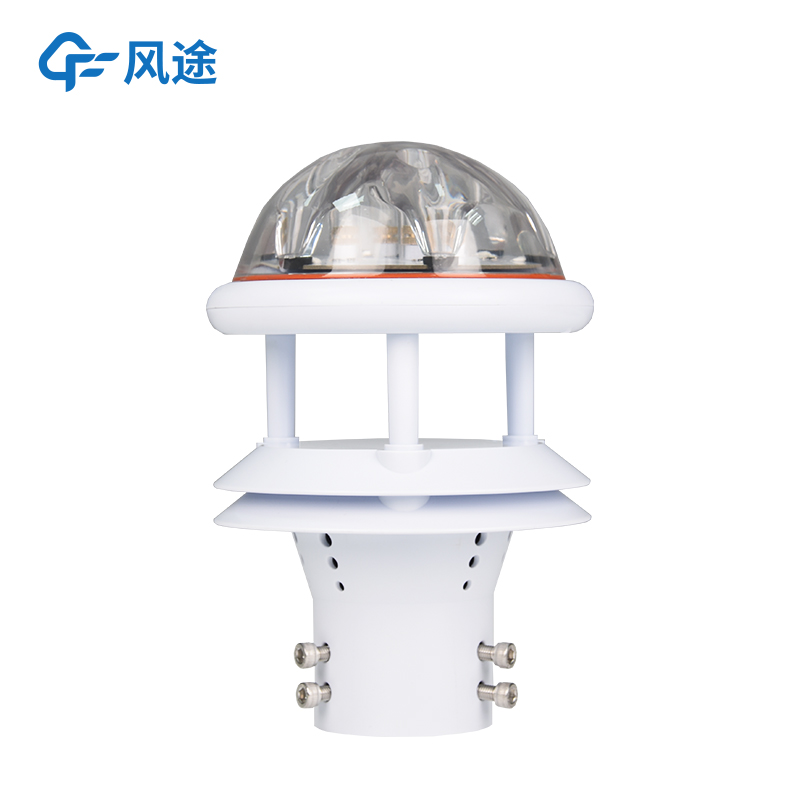Shandong Fengtu IOT Technology Co., Ltd
Sales Manager:Ms. Emily Wang
Cel,Whatsapp,Wechat:+86 15898932201
Email:info@fengtutec.com
Add:No. 155 Optoelectronic Industry Accelerator, Gaoxin District, Weifang, Shandong, China

Sales Manager:Ms. Emily Wang
Cel,Whatsapp,Wechat:+86 15898932201
Email:info@fengtutec.com
Add:No. 155 Optoelectronic Industry Accelerator, Gaoxin District, Weifang, Shandong, China
time:2025-08-07 09:25:56 source:Weather Station viewed:215 time
In the system of meteorological observation and hydrological research, precipitation measurement is an indispensable link. Rainfall data not only lays a solid foundation for weather forecasting and climate research but also plays a decisive role in decision-making in fields such as water resource management, flood control and disaster reduction, agricultural production, and environmental protection. A rain gauge is a professional instrument for measuring precipitation. Three commonly used rain gauges are recommended: Optical Rain Gauge, Optical Rain Gauge, and piezoelectric rain gauge.
The Optical Rain Gauge works based on the principles of light refraction and scattering. It generally includes an infrared light-emitting diode and a corresponding receiver. When raindrops pass through the optical path between them, they refract or scatter the light, causing changes in the light intensity received by the receiver. By detecting the frequency and amplitude of such changes, the rainfall intensity and precipitation can be calculated. It is small in size, light in weight, and easy to install, making it suitable for places with limited space, such as rooftops and telephone poles. It has a fast response speed, can quickly detect changes in rainfall intensity, and has no mechanical moving parts, resulting in low maintenance costs and a long service life. It is commonly used in meteorological stations, environmental monitoring stations, urban flood control monitoring, etc., and can also be used for agricultural precision irrigation monitoring. However, it is more sensitive to the size and shape of raindrops. In heavy rain or torrential rain, the mutual interference of raindrops may affect its accuracy. It is also relatively expensive, but it has high sensitivity, can detect small raindrops, has high measurement accuracy, and is less affected by the external environment.
Another Optical Rain Gauge is based on the principle of infrared light absorption and reflection. It emits infrared light of a specific wavelength, which is partially absorbed and reflected when encountering raindrops. By measuring the intensity of the reflected infrared light, the number and size of raindrops can be determined, and then the precipitation can be calculated. It has a wide measurement range, can adapt to different rainfall intensities, and has strong anti-interference ability, being unaffected by external light and electromagnetic signals. Its structure is simple, making it easy to produce and apply in batches. It is widely used in automatic weather stations, traffic road meteorological monitoring, airport meteorological monitoring, etc., and can monitor rainfall in real-time to provide decision-making basis for traffic scheduling, flight takeoffs and landings, etc. It has a fast measurement speed, can output results in real-time, and has good stability, with little change in accuracy during long-term use. However, in weather with fog, haze, etc., particles in the air will scatter infrared light and affect its accuracy, and it is sensitive to raindrop distribution; uneven distribution may lead to errors.
The piezoelectric rain gauge measures precipitation using the piezoelectric effect. When raindrops hit the surface of the sensor, the impact force causes deformation of the piezoelectric crystal inside the sensor, thereby generating a weak electrical signal. By measuring the magnitude and frequency of the electrical signal, the size and number of raindrops can be calculated, and the precipitation can be obtained. It has high measurement accuracy, can accurately measure the precipitation of raindrops of different sizes, has good dynamic response, can quickly reflect changes in rainfall intensity, and has strong adaptability to the environment, being able to work normally in harsh environments such as high temperature, low temperature, and humidity. It is often used in hydrological monitoring stations, water conservancy project monitoring, geological disaster early warning, etc., and can provide accurate data for water resource management, flood early warning, etc.

Rain is a natural necessity, but excessive rainfall can bring about serious disasters. Urban waterlogging can lead to traffic paralysis, and floods can submerge streets and houses, posing a threat to life safety. Heavy rainfall in mountainous areas is likely to trigger mountain torrents, landslides...
The integrated automatic rainfall monitoring station is an unattended rainfall monitoring equipment. It not only has the incomparable advantages of traditional rain gauges and manual observation instruments, but also plays a significant role in improving work efficiency and reducing human errors. Th...
Large - scale field agriculture features large - scale planting and vast land areas. In large - scale farms in regions such as Northeast and North China, the planting area can reach thousands or even tens of thousands of mu. The types of crops are relatively single, mainly including food crops such...
Research-grade equipment for environmental monitoringis becoming a tool for tourist attractions, nature reserves, and urban management departments.The concentration of negative air ions is one indicator of air quality. To meet the demand for atmospheric negative ion observation from relevant d...